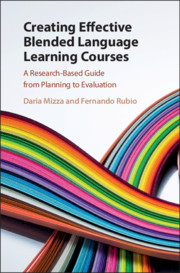 Creating Effective Blended Language Learning Courses
Creating Effective Blended Language Learning Courses Book contents
- Creating Effective Blended Language Learning Courses
- Creating Effective Blended Language Learning Courses
- Copyright page
- Contents
- Figures
- Tables
- Author Biographies
- Preface
- Acknowledgments
- Guide to Book Resources and Activities
- Part I Theoretical Background
- Part II Route, Process, and Structure
- Chapter Two The Road Map to Blended Language Learning Adoption
- Chapter Three The Foundation of Blended Language Learning
- Chapter Four Course Design and Redesign in Practice
- Part III The BLL Development Framework
- References
- Index
Chapter Four - Course Design and Redesign in Practice
Examples from Colleges and Universities across the World
from Part II - Route, Process, and Structure
Published online by Cambridge University Press: 18 September 2020
- Creating Effective Blended Language Learning Courses
- Creating Effective Blended Language Learning Courses
- Copyright page
- Contents
- Figures
- Tables
- Author Biographies
- Preface
- Acknowledgments
- Guide to Book Resources and Activities
- Part I Theoretical Background
- Part II Route, Process, and Structure
- Chapter Two The Road Map to Blended Language Learning Adoption
- Chapter Three The Foundation of Blended Language Learning
- Chapter Four Course Design and Redesign in Practice
- Part III The BLL Development Framework
- References
- Index
Summary
Chapter 4 provides examples that represent either design or redesign solutions for language education in institutions located in the United States and Europe. In the second section of the chapter, a set of follow-up activities allows readers to analyze and compare the information from each example. This will consolidate the content presented in Chapters 2 and 3, giving a more concrete idea of the context and process involved in a BLL path.
Keywords
- Type
- Chapter
- Information
- Creating Effective Blended Language Learning CoursesA Research-Based Guide from Planning to Evaluation, pp. 75 - 102Publisher: Cambridge University PressPrint publication year: 2020
